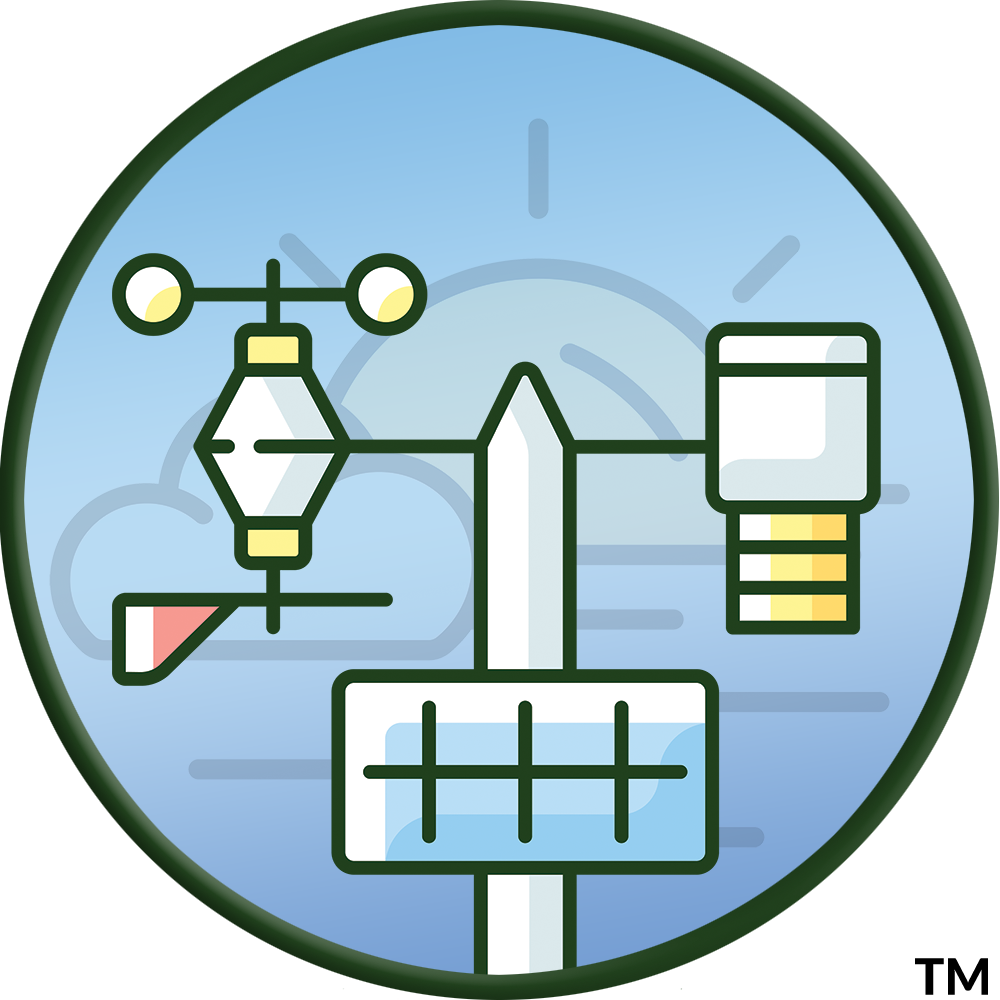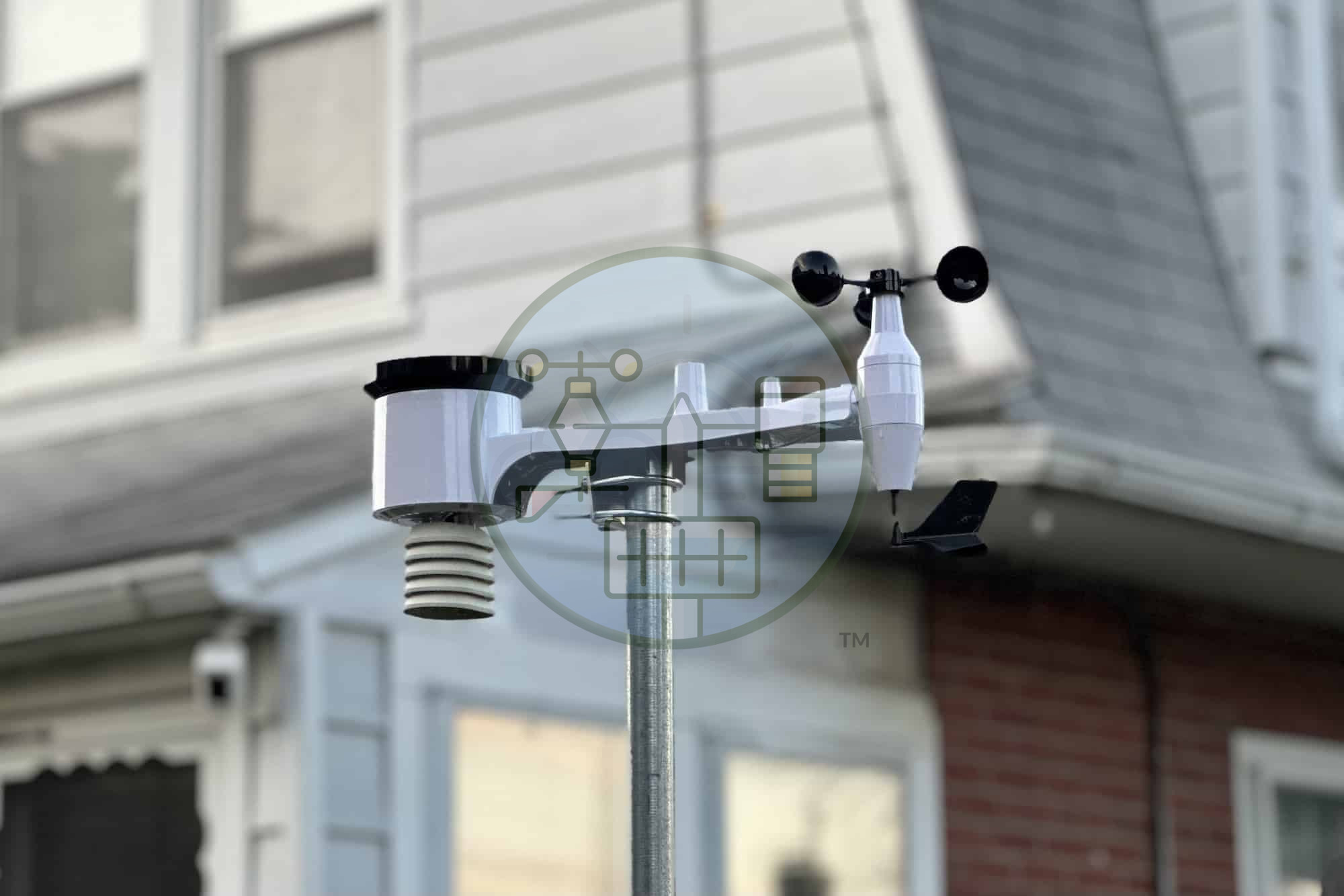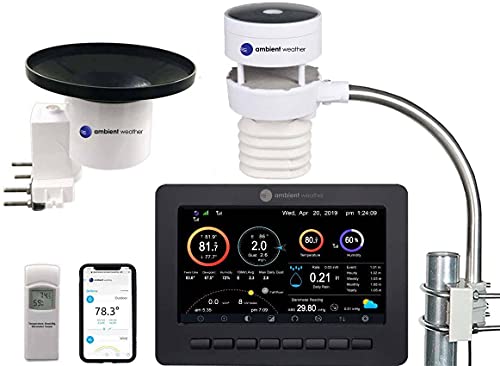An automatic weather station is a broad term that describes weather stations that take measurements without humans. Basic home weather stations are automated, as are official weather stations, known as Automated Surface Observing Systems (ASOS) in the United States. An automatic weather station can range in price from as little as $100 to tens of thousands of dollars for commercial equipment.
However, in most residential and commercial applications, the average price is between $300 and $2,000 USD depending on the station purchase, any specialized sensors, and mounting.
Average Weather Station Cost By Application
A casual weather watcher won’t need the station that a farmer would. In other words, determine your primary need for a weather station and go from there.
Casual weather watcher
If you just want to be able to know what’s going on outside before stepping out the door, or if your garden’s getting enough water, we recommend a basic station like the Ambient Weather WS-2902. For under $200, you’re getting a fully featured weather station that we’ve found to be super reliable. If you don’t need the solar and UV sensors, you can step down to the WS-1965, but for $50 more the WS-2902 is far more accurate.
Average cost: $100-$200 USD
The Ambient Weather WS-2902 is surprisingly feature-packed and accurate, given its price. Many of the cheap wireless home weather stations we’ve tested had issues that prevented us from genuinely recommending them. The WS-2902 does not.
The WS-2902 isn’t as accurate as the WS-5000 or Davis weather stations, but it’s also less than half the price. The connectivity is a standout feature at its price point, with full smart-home capabilities thanks to IFTTT, Google Assistant, and Amazon Alexa support. Like the WS-5000, connecting the station to AmbientWeather.net allows you to share data with Weather Underground and access weather station data through the app or a web-based portal.
If you can’t justify the price of other weather stations on our list, the Ambient Weather WS-2902 is the best budget model available. The LCD display console in the WS-2902 is much improved over previous models. When we tested the WS-2902A, the console suffered from readability problems beyond a 30-degree angle, which is far less of a problem now.
The WS-2902 weather station has all the features you’d expect including indoor and outdoor temperature and humidity, rainfall, wind speed and direction, and barometric pressure. A nice surprise is the inclusion of a fairly accurate UV/light sensor, something you typically don’t see on other home weather stations even in this price range.
Weather enthusiast
Consider yourself a “weather weenie?” Or just want a more dependable station overall? While the WS-2902 might be fine, we’d also suggest you check out the Davis Vantage Vue, Tempest Weather System, or the Ambient Weather WS-5000. Each of these stations has both its strengths and weaknesses, but are a step above the previous recommendations.
Average cost: $300-$600 USD
The Davis Vantage Vue got a much-needed update when the WeatherLink Console debuted earlier this year. It’s the successor to the WeatherLink Live hub and changed how you interact with your station for the better. It’s built on Android and appears to be upgradeable, so you’re no longer stuck in the past with dated hardware.
The reliability of Davis weather stations is legendary in the weather enthusiast community. I’ve had mine running continuously since September 2016, and I know others who have had theirs for over a decade. There is also the story of a gentleman with a Davis Weather Monitor II (a predecessor to the Vue) who recently upgraded after 27 years (that’s not a typo).
While you don’t get the unbeatable accuracy of the high-end Davis Vantage Pro 2 home weather station, my experience has been positive. With the WeatherLink Console, sharing your data is super easy. While on your home network, you can watch live conditions (updated every two seconds), and your data is uploaded to Davis’ platform once per minute.
If there’s one thing I’d ding this weather station for, it’s its lack of upgradeability. Sure, you get all the basics, but the only optional sensor you can add is the Davis AirLink.
WeatherFlow is a relatively recent entrant to the home weather station market, although it has years of experience. Its coastal network of professional weather stations has been delivering vital information to meteorologists for years and has proven useful (and durable) in landfalling hurricanes.
The Tempest Weather System is WeatherFlow’s first attempt at a wireless home weather station. For the most part, it’s a good start. It’s the only one of our stations with built-in lightning detection, one of Tempest’s standout features, and operates entirely on solar power.
We found that the real-time lightning data matched better with historical data than from professional lightning detection networks. It regularly detected distant lightning faster than any other station we’ve tested. In addition to lightning data, the Tempest measures indoor and outdoor temperature and humidity, barometric pressure, and UV and light intensity.
Wind is measured by a sonic anemometer which we found to be fairly accurate. And up until the Ecowitt Wittboy, the Tempest Weather System was the only home weather station to use a haptic rain sensor.
See our review for a way to save 10% off your next purchase from WeatherFlow.
Gardening & Farming
If you’re in need of weather data for agricultural purposes, we highly recommend stations on the high end for their accuracy and expandability. Stations like the WS-5000, Davis Vantage Pro2, or KestrelMet 6000 are stations to investigate. All three offer optional soil and leaf moisture sensors and UV and light data. However, you will pay considerably more.
Average cost: $500-$1,500 USD
At $999, the KestrelMet 6000 is not for the casual weather enthusiast. Despite this, its excellent features, such as top-tier accuracy, ease of installation, and high-quality construction, make it a worthwhile investment for hardcore weather fans.
It matches the Davis Vantage Pro2 in size and accuracy, offering even better tools to view and analyze data. However, unlike the Pro2, it doesn’t require additional hardware for internet connectivity and outperforms Davis’ Vantage Vue in terms of temperature accuracy. Even compared to the WeatherFlow Tempest, KestrelMet 6000 proves superior in all aspects except for lightning detection and UV/solar sensors, the latter of which kept this from a nearly perfect score.
Standard are indoor and outdoor temperature and humidity measurements, rainfall, wind speed and direction, and barometric pressure. Solar irradiance sensors are available as an option at the time of purchase, as well as soil moisture and leaf wetness sensors. While the hefty price tag may be daunting, for those who value accuracy and the capacity for expansion, the KestrelMet 6000 is a solid choice.
The WS-5000 features a redesigned sensor suite, including an ultrasonic anemometer. Eliminating the cup anemometer found on other weather stations drastically reduces the number of moving parts and can measure wind speed as accurately as the cup-and-vane. This should extend its useable life as the traditional anemometer requires ongoing maintenance to ensure trouble-free use.
The Ambient Weather WS-5000s sensors were much more accurate in our tests than the WS-2902 and WS-1965, which use slightly lower-quality sensor suites. Thanks to expandability and a wide array of optional additional sensors, you can add just about any sensor you can think of, including air quality, soil moisture, water temperature, and lightning, all of which send data to the console in as little as every five seconds.
The company has made it easy to share your data publicly through Weather Underground. Its smart home connectivity is best in class, offering IFTTT compatibility to connect your station to your smart home system. Of course, there’s the Ambient Weather Network and the Ambient Weather app to view your personal weather stations’ data remotely on your mobile device or through the web app.
Educational Applications
We’d recommend the KestrelMet 6000 or Davis Vantage Pro2 for educational uses. Our reasoning here is accuracy. While the KestrelMet 6000 comes with far aspiration, the Vantage Pro2 base model does not so make sure you select the correct model.
Average cost: $1,000-$2,000 USD
The Davis Vantage Pro2 is one of the best high-end home weather stations you can buy and is made even better by WeatherLink Live or the WeatherLink Console. The Vantage Pro2 is a proven workhorse. Several years ago in the Caribbean, a VantagePro 2 recorded a 199mph wind gust in a hurricane before its mast snapped. That’s the highest wind reading ever recorded on a personal weather station!
So why is the Vantage Pro2 more accurate? The sensors in the Vantage Pro2 are of higher quality than in the Vantage Vue. A larger rain gauge collects rain more efficiently, especially in windy situations. The radiation shielding around the temperature and humidity sensor is larger, allowing for better airflow.
Another difference between the VantagePro 2 and the Vantage Vue is the anemometer. Since it’s separate from the rest of the sensor suite, you can place it in a high location to improve your wind readings.
While it takes a bit more time to set up, no other weather station on the market even comes close if you want the most accurate weather data. As a side note, there is also a bundle that includes the console. While the Vantage Pro2’s console is much more helpful than the Vantage Vue’s, it does add to the price. Whether you need it is up to you.
Depending on the model you select, you may also have UV and Light Sensors (standard on the Pro2 Plus), and fan aspiration, which we strongly recommend if you’re very concerned about accuracy. Further optional sensors include soil moisture and leaf wetness sensors, and air quality measurements via AirLink.
Commercial Applications
If weather data at a job site or location is important, we’d recommend either the Davis Vantage Pro2 or KestrelMet 6000. Both offer optional cellular connectivity, which allows you to monitor weather conditions even offsite. The Tempest also has a commercial version known as the TempestOne. The cost varies widely based on the business’s unique needs.
Average cost: $1,000-$2,500 USD+
While these are only a few examples, we hopes this helps you narrow down your search to the best automatic weather station for your particular need. Have any questions? Feel free to comment below!









